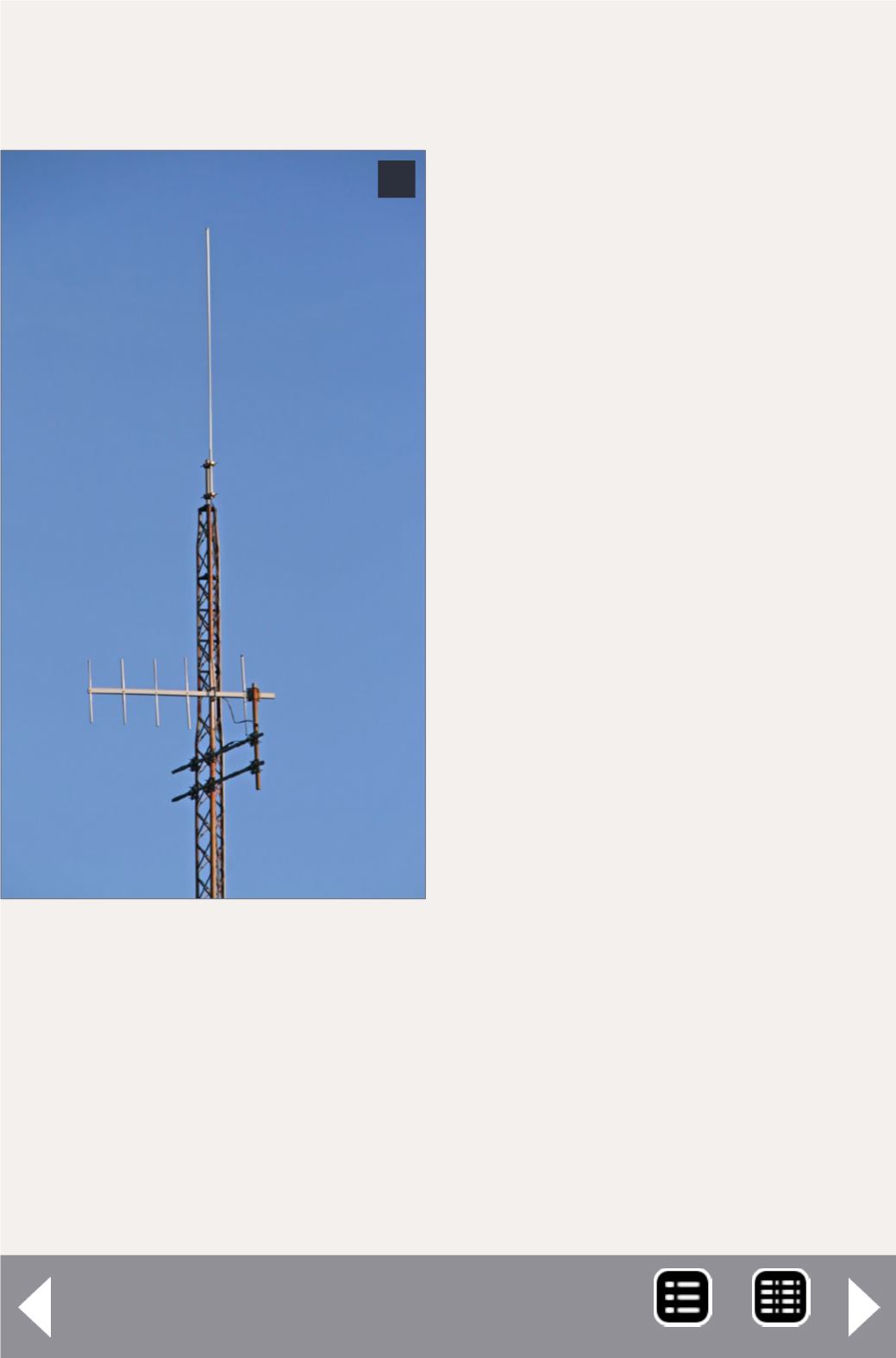
Radio base station - 5
basing them on the angle of view, the proximity to the
viewer, and the tower's surroundings.
For example, to create the
base antenna for my own
tower, I chose .033” diameter
brass rod (Detail Associates
#2509) whose scale diam-
eter is nearly twice that of
the typical prototype base
antenna. Likewise, I doubled
the typical 42-48” length,
which makes the thick
antenna appear thinner yet
still provides enough mass to
stand out amongst the trees
and busy backdrops.
After choosing an appropri-
ate size, it’s now simply a
matter of constructing the
antenna and its support
pipe, then adding them to
the top of the tower. Cut two
lengths of rod, the first to a
scale 24” and the second to
the desired antenna length,
adding 12 scale inches. Next,
drill two holes of the corre-
sponding rod thickness into
the top of the tower, locat-
ing the two side by side and
as close together as possible.
9: The Norfolk Southern
installation reveals a long
omni-directional whip
style located at the top
of the tower. The smaller
directional antennas have
the look of an older style
television antenna, often
referred to as yagis.
9
MRH-Jan 2014


